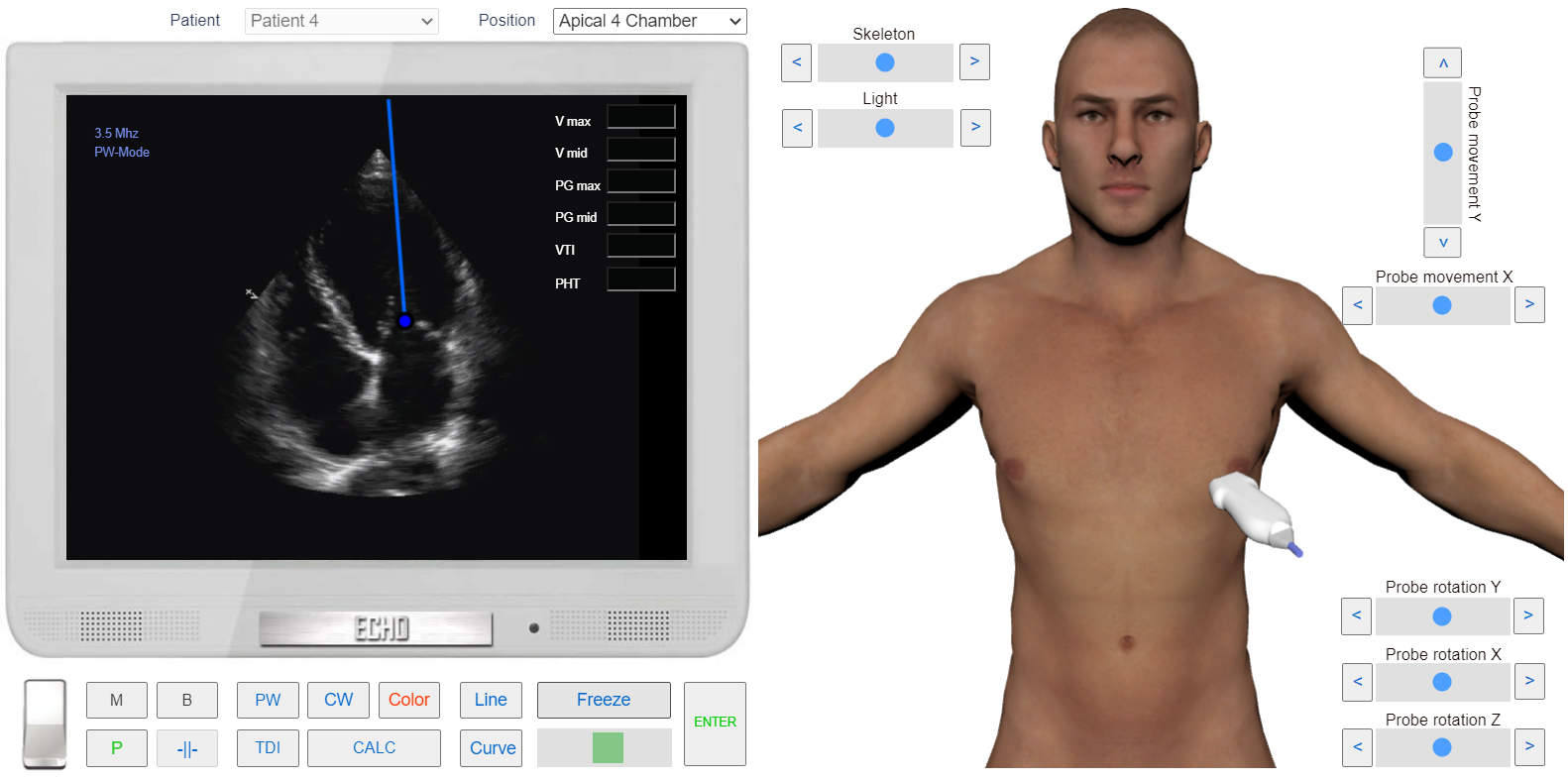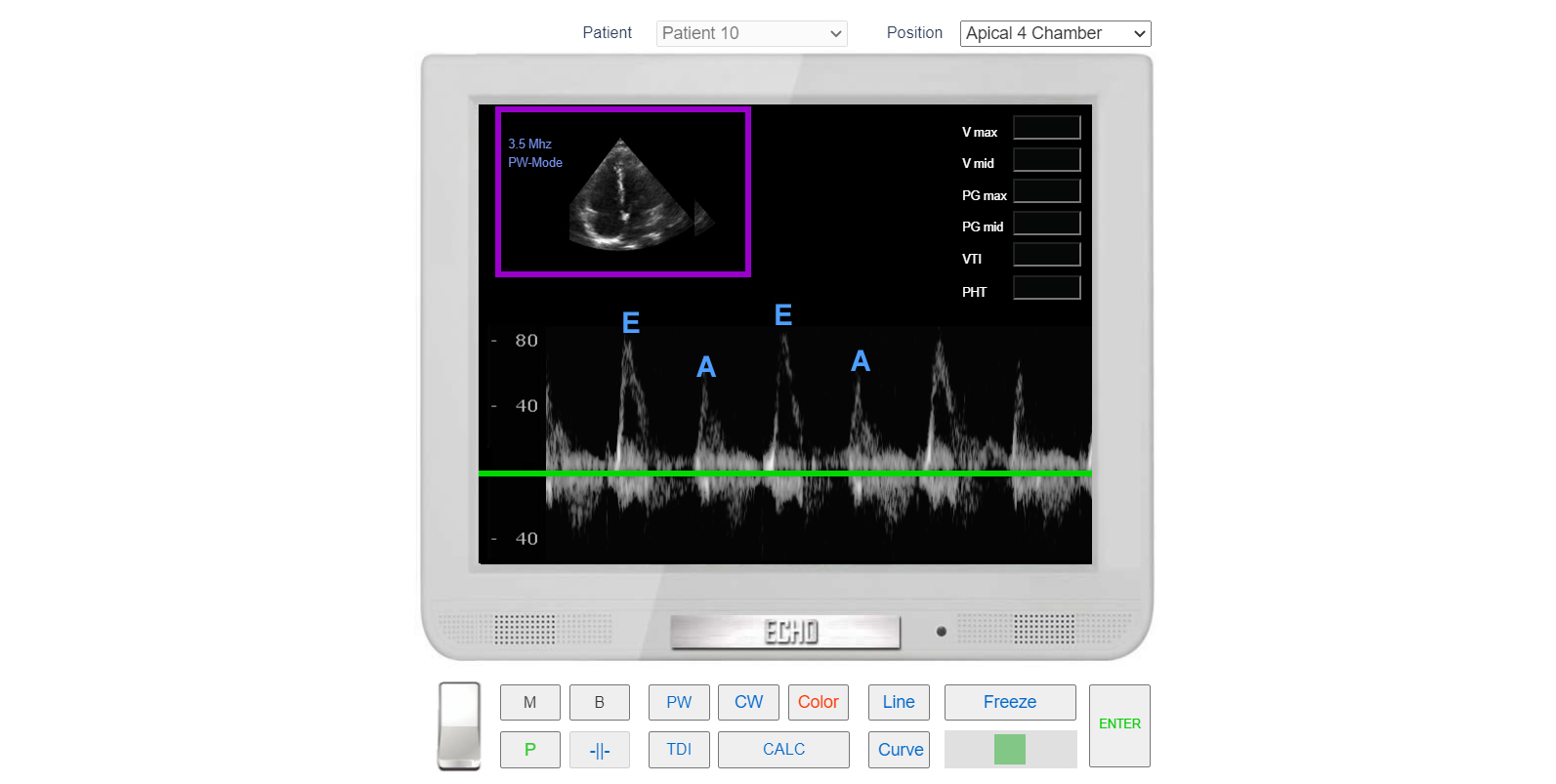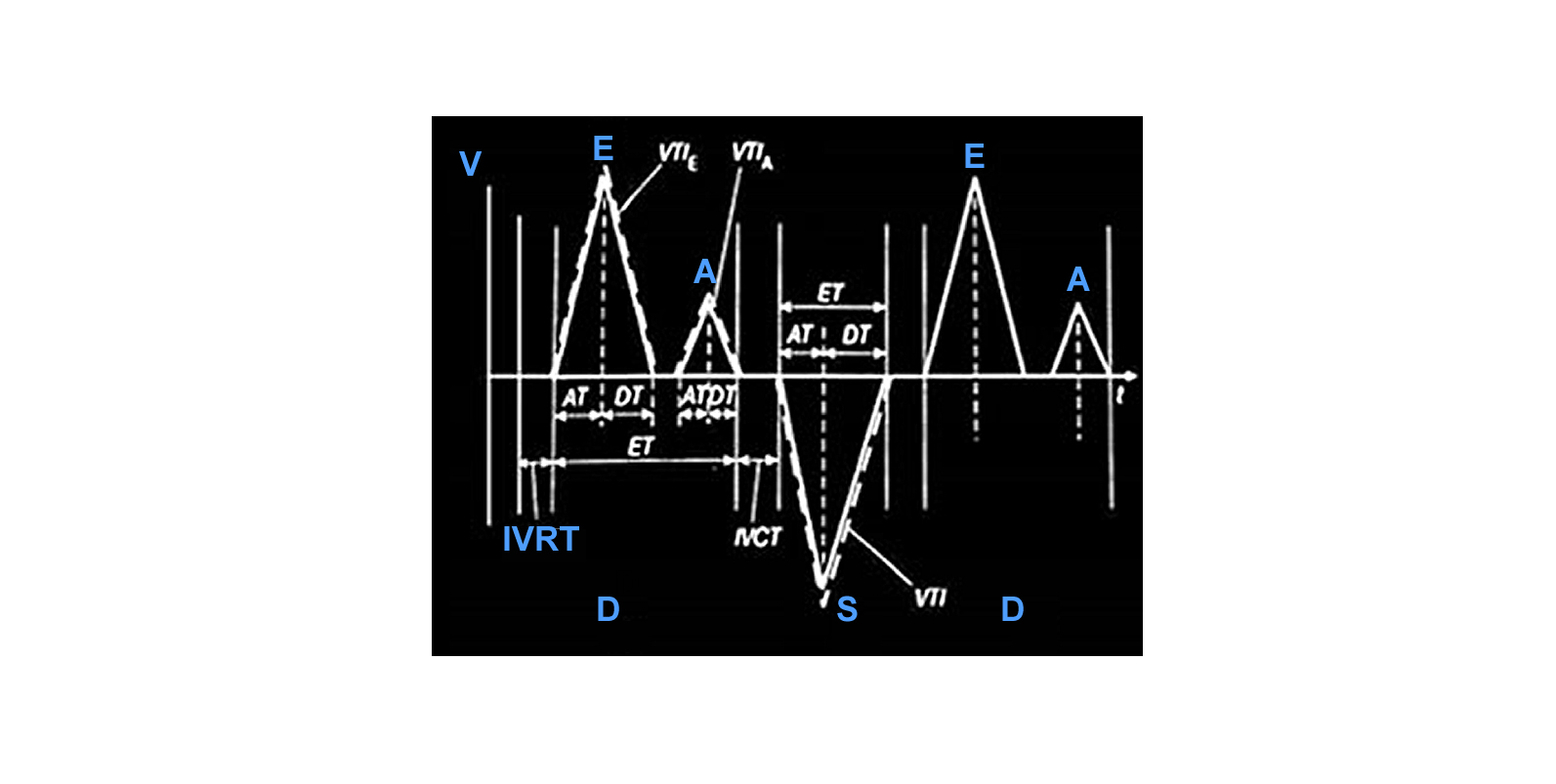Transmitral diastolic flow spectral doppler
Echocardiography Textbook
The best position to study transmitral diastolic flow by spectral Doppler (PW, CW) is the apical four-chamber view. In this case, the flow is more parallel to the ultrasonic beam. The control volume is placed at the level of the end of the open leaflets of the mitral valve.

Normal transmitral flow occurs only in the diastole phase.
The flow is towards the transducer, is recorded from the top of the baseline, and is biphasic.
- E - Early diastolic filling.
- A - Atrial contraction.
Diastole can be divided into two more phases:
- IVRT - Isovolumetric relaxation time. Can be measured if simultaneously studying the transmitral diastolic flow and the flow in the outflow tract of the left ventricle. In this case, the sample volume is placed at the border of these two streams.
- L - Diastasis, small wave between E and A, more common in children and adolescents.

Using the transmitral diastolic flow spectrogram the following parameters can be measured and calculated:
- AT (Acceleration Time) - The time from the opening of the mitral valve to the peak flow.
- DT (Deceleration Time) - the time from the Peak to Baseline.
- ET (Ejection Time) - The time from opening to closing the mitral valve.
- Vmid (Average Flow Velocity) - The sum of the flow velocities measured every 2 seconds, divided by the number of measurements.
- VTI (Velocity Time Integral) - VTI = Vmid x ET
- Vmax - Maximum flow velocity.
- IVRT - Isovolumetric relaxation time.
- IVST - Isovolumetric contraction time.

How to Simulate transmitral diastolic flow (PW and CW mode)?